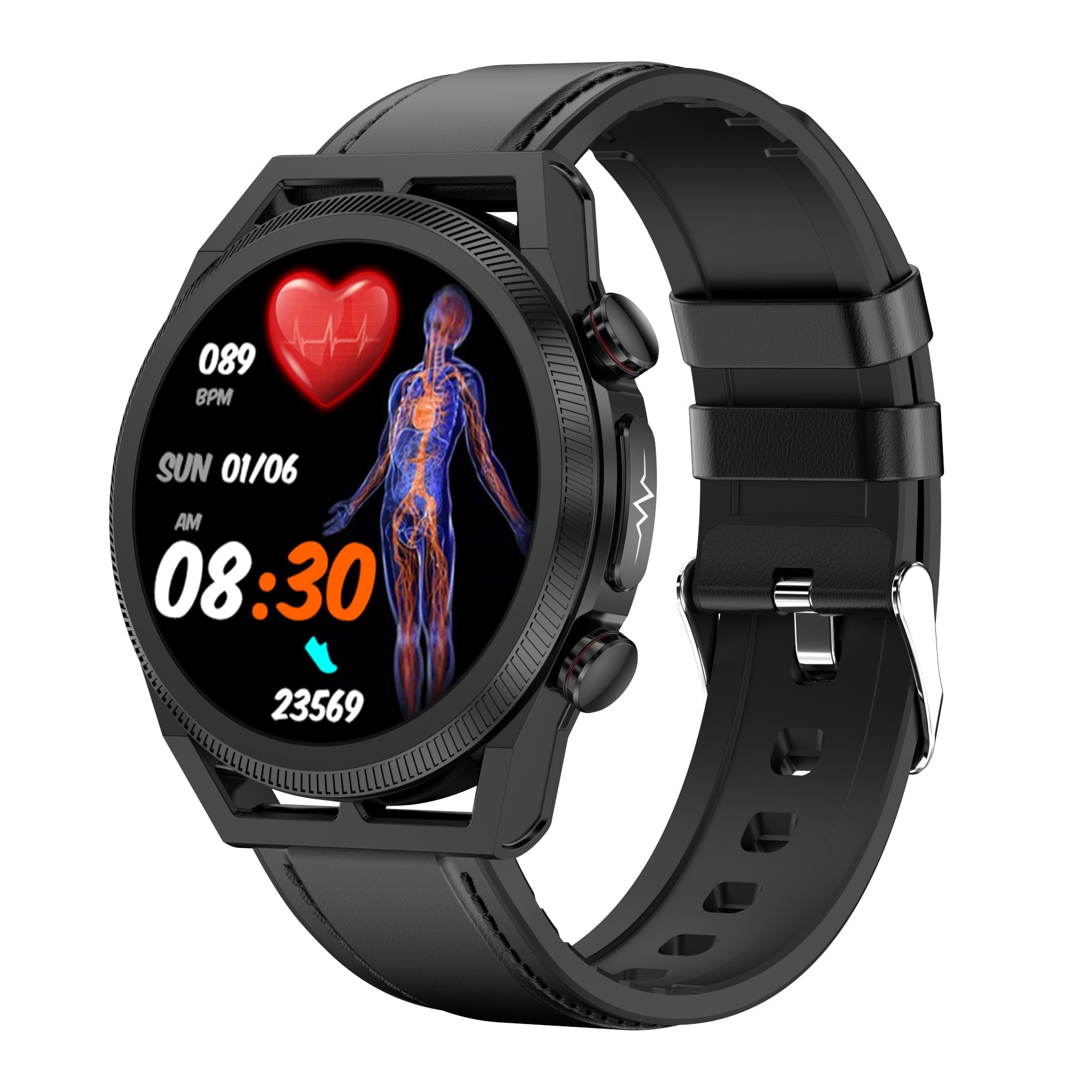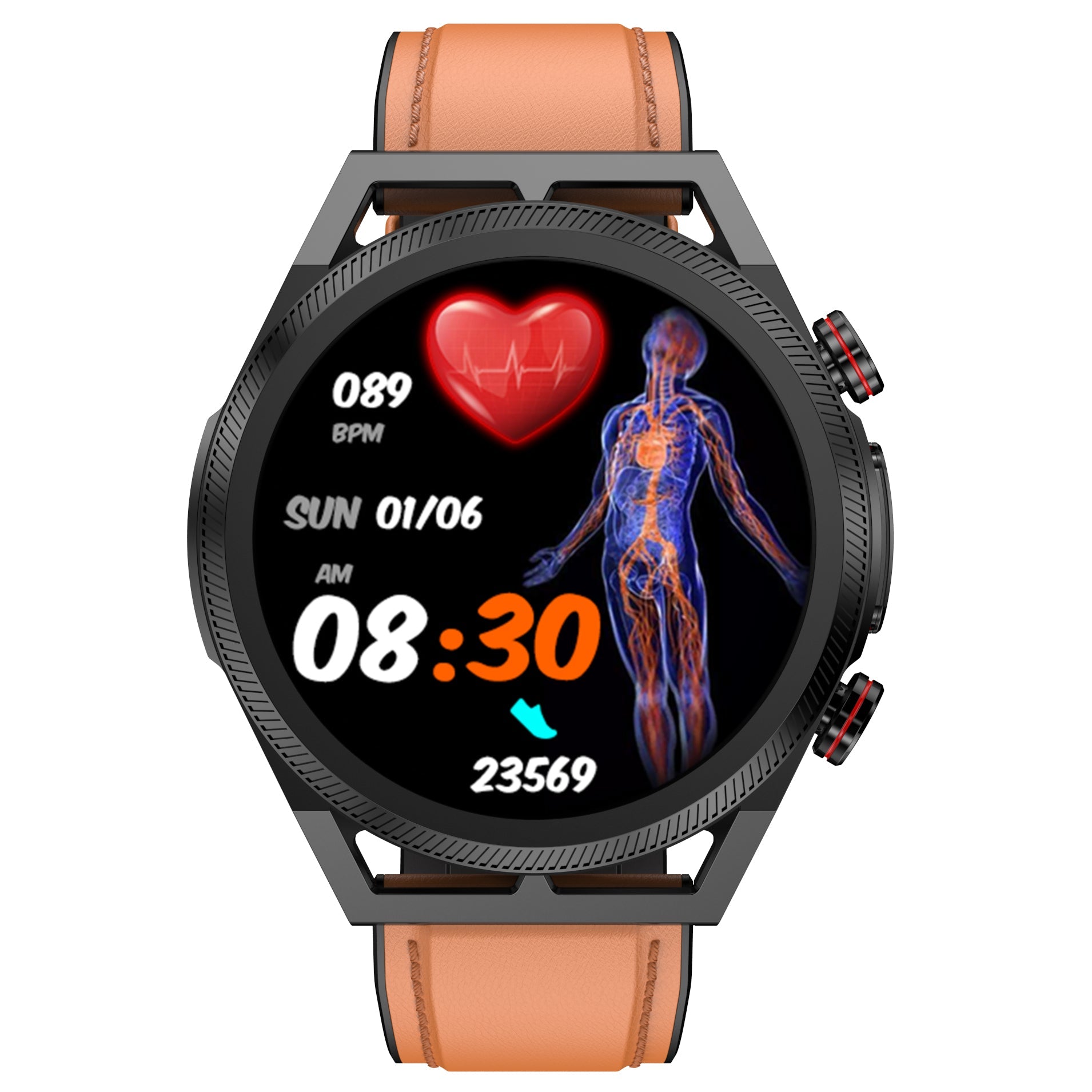Montres en ligne pour hommes
L'entraînement par intervalles à haute intensité (HIIT) a acquis une immense popularité en raison de sa capacité à brûler des calories et à améliorer la forme cardiovasculaire en peu de temps. Cependant, pour les personnes souffrant de problèmes ou de préoccupations articulaires, la nature à fort impact des exercices HIIT traditionnels peut être un obstacle important. La bonne nouvelle est qu'il existe une solution révolutionnaire : une variante HIIT conçue pour être plus douce pour les articulations sans compromettre l'intensité de l'entraînement. Dans ce blog, nous explorerons comment cette approche innovante du HIIT peut rendre votre parcours de remise en forme plus inclusif et plus respectueux des articulations.
Comprendre le défi :
Les séances d’entraînement HIIT traditionnelles impliquent souvent des mouvements dynamiques à fort impact comme des jumping jacks, des burpees ou des sprints, qui peuvent exercer une pression considérable sur les articulations. Pour les personnes souffrant d’arthrite, de blessures antérieures ou d’inconfort articulaire général, la participation à de tels exercices peut être peu pratique, voire contre-productive. La nécessité d’une alternative respectueuse des articulations a conduit au développement d’une version modifiée du HIIT qui privilégie les mouvements à faible impact.
HIIT à faible impact : une alternative plus douce et efficace :
-
Réduction du stress sur les articulations:Le HIIT à faible impact remplace les mouvements à fort impact par des exercices plus doux pour les articulations. Cette modification réduit considérablement la tension exercée sur les genoux, les chevilles et d'autres zones vulnérables.
-
Fitness inclusif:Les variantes à faible impact rendent le HIIT accessible à un public plus large, notamment aux personnes souffrant de problèmes articulaires, aux personnes âgées ou aux personnes en début de parcours de remise en forme. Il favorise l'inclusion dans la communauté du fitness.
-
Maintient l'intensité:L'avantage du HIIT à faible impact est qu'il préserve l'aspect haute intensité de l'entraînement. En incorporant des exercices difficiles à moindre impact, vous pouvez toujours obtenir la combustion des calories et les bienfaits cardiovasculaires synonymes du HIIT traditionnel.
Composants clés du HIIT respectueux des articulations :
-
Exercices au poids du corps:Concentrez-vous sur les mouvements de poids corporel comme les squats, les fentes et les sauts modifiés pour maintenir l'intensité sans impact brutal.
-
Cardio à faible impact:Incorporez des exercices comme le vélo, la natation ou la marche rapide pour augmenter votre rythme cardiaque sans soumettre vos articulations à un stress excessif.
-
Pliométrie adaptée:Modifiez les exercices pliométriques pour réduire l’impact – par exemple, remplacez les sauts en hauteur par des step-ups ou des toe taps.
-
Travail de renforcement musculaire:Mettez l'accent sur les exercices de renforcement musculaire qui ne sollicitent pas les articulations, comme les planches ou les alpinistes modifiés.
Adopter une variante du HIIT respectueuse des articulations est une véritable révolution pour quiconque recherche un entraînement de haute intensité tout en accordant la priorité à la santé des articulations. En apportant de simples modifications à votre routine d'exercice, vous pouvez continuer à profiter des bienfaits du HIIT sans compromettre le bien-être de vos articulations. N'oubliez pas que l'essentiel est d'écouter votre corps, d'apporter les modifications nécessaires et de profiter d'un parcours de remise en forme durable et inclusif. Que vous souffriez de problèmes articulaires ou que vous recherchiez simplement un entraînement plus respectueux des articulations, cette approche HIIT modifiée pourrait être la percée que vous attendiez.
Tout en accordant la priorité à la santé des articulations dans votre routine d’exercice, il est tout aussi important de surveiller votre état de santé général.La montre intelligente de mesure de l'acide urique et des lipides BP Doctor ECG 7 combine de manière transparente le suivi de la condition physique avec des fonctionnalités avancées de surveillance de la santé, offrant une surveillance de la fréquence respiratoire et de la fréquence cardiaque, une mesure non invasive de la glycémie, une surveillance de la pression artérielle, une mesure de l'acide urique, une surveillance des lipides sanguins et diverses surveillances d'exercice, etc.
Lorsque vous vous lancez dans votre parcours HIIT respectueux des articulations, le Montre connectée BP Doctor ECG 7 devient votre compagnon de santé tout-en-un. Améliorez vos séances d'entraînement, donnez la priorité à la santé des articulations et intégrez de manière transparente une surveillance complète de la santé dans votre vie quotidienne. Grâce à cette puissante combinaison, atteindre vos objectifs de remise en forme tout en préservant votre bien-être général n'a jamais été aussi accessible.










